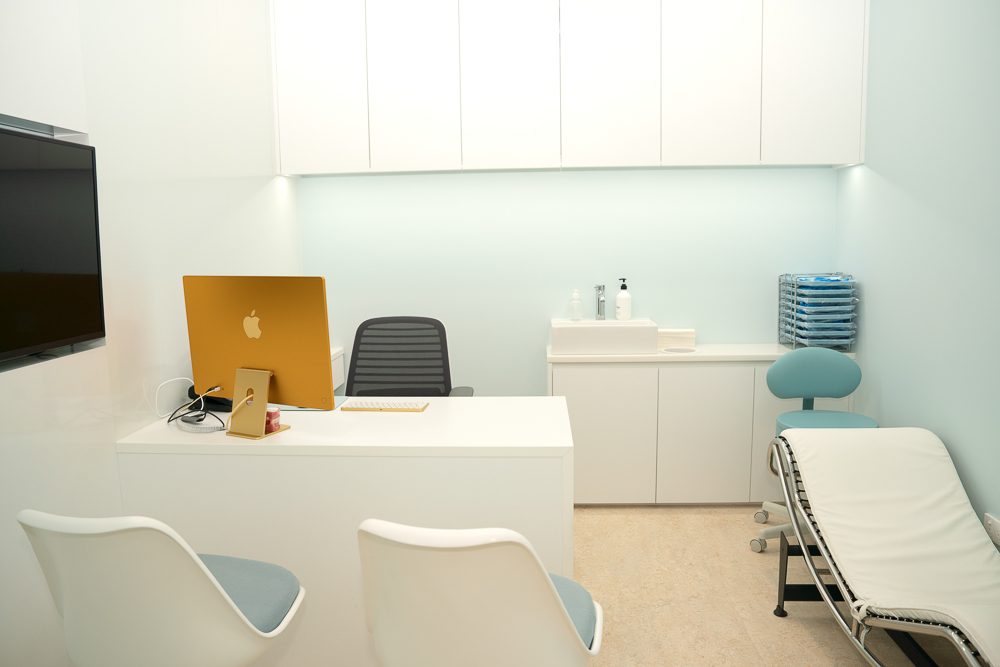
Braces straighten your teeth, but retainers make them last. Milk Orthodontics tells you all about these dental devices—pros, cons, types, and more.
Introduction
People often mistake braces for a single-step solution for getting straight teeth. However, teeth retainers are just as important in this process. Orthodontic treatments like braces can only align your teeth, and it’s the retainers’ job to maintain them in the correct position. These dental devices are always custom-made for each set of teeth, meaning no two retainers are ever the same.
Just like other orthodontic processes, getting the right retainers for your teeth requires careful consideration. Take a look at this all-in-one guide from Milk Orthodontics as we help you understand everything there is to know about teeth retainers. Find out how they work, why you should use them after wearing braces, their different types, and more details.
How do Teeth Retainers Work?
Extensive procedures like getting braces focus on aligning your teeth, and retainers work by providing support to retain this, as their name suggests. Even after removing braces, the teeth are not entirely set in their new positions. This is where retainers come to the rescue to help gums, bones, and muscles adjust to the changes. This, in turn, prevents the teeth from reverting to how they were aligned before. Simply put: braces straighten teeth, and retainers keep them that way.
Why You Should Use Them
Once you get braces, it’s almost imperative that you follow them up with retainers as well. However, before planning to get braces, there are certain things to be aware of about the pros and cons of using teeth retainers.
Pros
As mentioned before, teeth retainers are crucial when it comes to ensuring that teeth remain in their correct position after orthodontic treatment. Without this, it’s easy for teeth to shift back to their old alignment. Natural habits like chewing and grinding can render braces useless in the absence of retainers. While it’s not a comparison, retainers fit your teeth better than most braces since they are custom-made for a snug and comfortable fit.
Cons
Teeth retainers don’t have any direct disadvantages except a few pointers that apply to most orthodontic treatments. Bear in mind that they can feel uncomfortable for some individuals, especially in the early stages of use. Just like braces, these dental devices also have to be cleaned regularly. Not doing so can result in oral hygiene problems. Handle them with care to ensure that they don’t break.
Different Types of Retainers
Permanent Retainers
Also called fixed retainers, these devices stay bonded to the teeth with a special glue. It is not possible to remove them without the right orthodontist. In most cases, permanent retainers are used on the front, lower, or upper teeth. While some people might favour these since they are difficult to notice, they do end up being uncomfortable in a few scenarios.
Removable Retainers
Also called Hawley retainers, they can be easily removed from your teeth whenever you want. They are made of wire attached to plastic or acrylic in the shape of your mouth. Removable retainers are a go-to choice for many as they are easy to take out and clean.
Clear teeth retainers also fall under this category. They mix the best of both worlds with permanent and removable retainers. They borrow the invisible look of fixed retainers while blending with the custom fit used in Hawley retainers.
How to Use Teeth Retainers
Wearing Schedule
The general thumb rule for retainers goes like this: wear them as your orthodontist recommends. Always follow any specific guidelines set by them, as all retainers are different from each other. Most people wear retainers all day for the first few months and transition to using them only at night.
Removing them regularly also takes a lot of care; use both index fingers at the gumline to avoid damage while taking them out. Kids often get tired of wearing retainers for long periods of time. As a parent, it’s important to develop it into a habit for your child and remind them about their advantages. Ignoring retainers can leave their teeth completely misaligned, leading to further complications like developing an overbite.
Precautions to take
Some teeth retainers require regular visits to the orthodontist for a few adjustments or other changing needs. This includes tweaking the wires that make up the custom-made mould. In case of any problems or discomfort, always give your specialist a heads-up. When retainers are not being used, carefully store them away in the cases meant specifically for them. This prevents any damage to the device.
How to clean them
Cleaning is an important part of using removable retainers for your teeth. Treat them like real teeth when you take them out and brush them with a toothbrush and toothpaste. Similarly, permanent retainers also need to be cleaned regularly to prevent oral problems like cavities and gingivitis. It’s always important to remove your retainers while eating to avoid food particles getting stuck in them. Even chewing gum or other similar substances can damage these devices.
Conclusion
This guide makes it clear as day that teeth retainers are indispensable when it comes to maintaining the results of orthodontic treatments. Your teeth’s long-term health and alignment are your top priorities, and choosing right is vital. Choose between permanent, removable, or clear retainers based on your needs, but always consult with an orthodontist first.
A daily routine with proper precautions and cleaning practices can make your retainer experience hassle-free. Keep in touch with specialist orthodontists to get the best of your treatment and inch closer to having beautiful straight teeth. Reach out to us to achieve the perfect smile of your dreams!

